«BABEL AND THE BEAST »
DU ZHENJUN , Solo Exhibition (Photography and paintings)
4 June – 6 September 2020
Openings
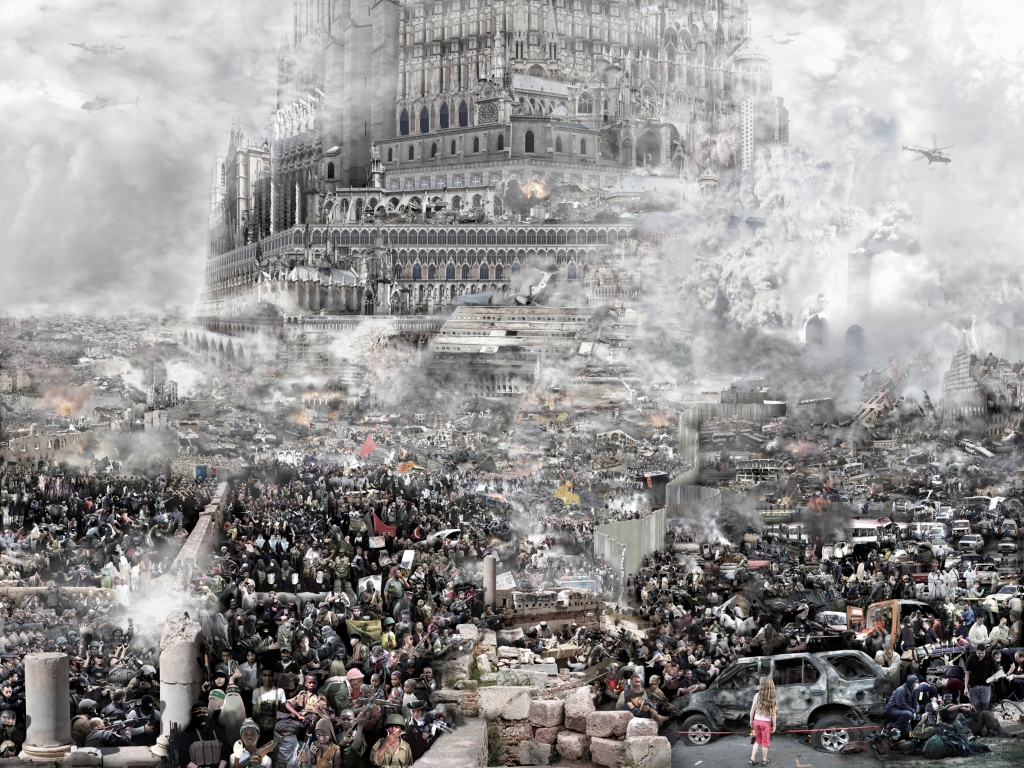
DU ZHENJUN, BABEL TOWER,__Ran乱_2011, Photography, size 160 x 120 cm, 240 x 180 cm._
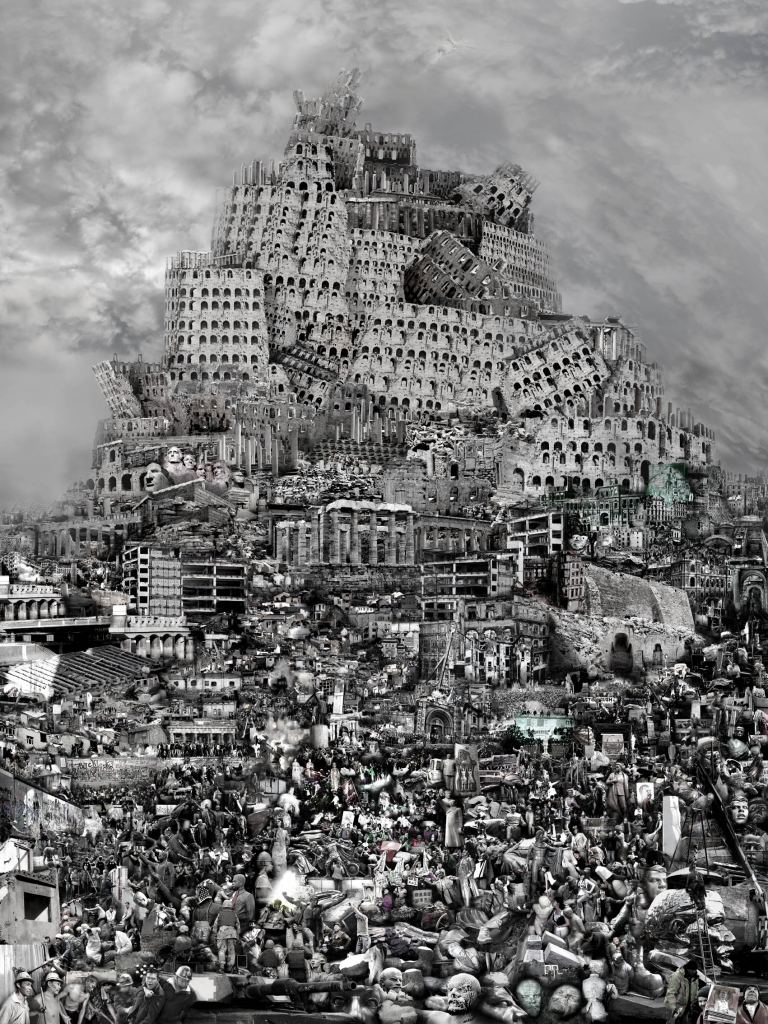
DU ZHENJUN, BABEL TOWER, _Destruction_2012_, Photography Diasec, 120x160cm

DU ZHENJUN, BABEL TOWER, _Pollution_2012_, Photography Diasec, 120x160cm
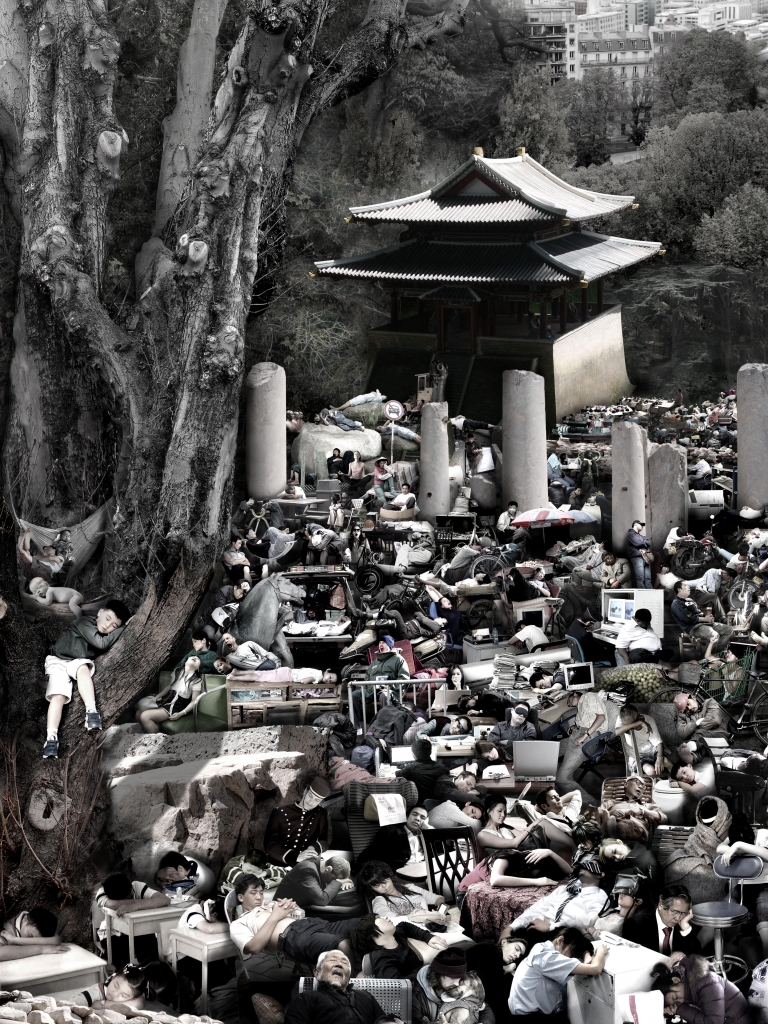
DU ZHENJUN, Ref Nap101, Photograph auf Dibond, 84x112cm
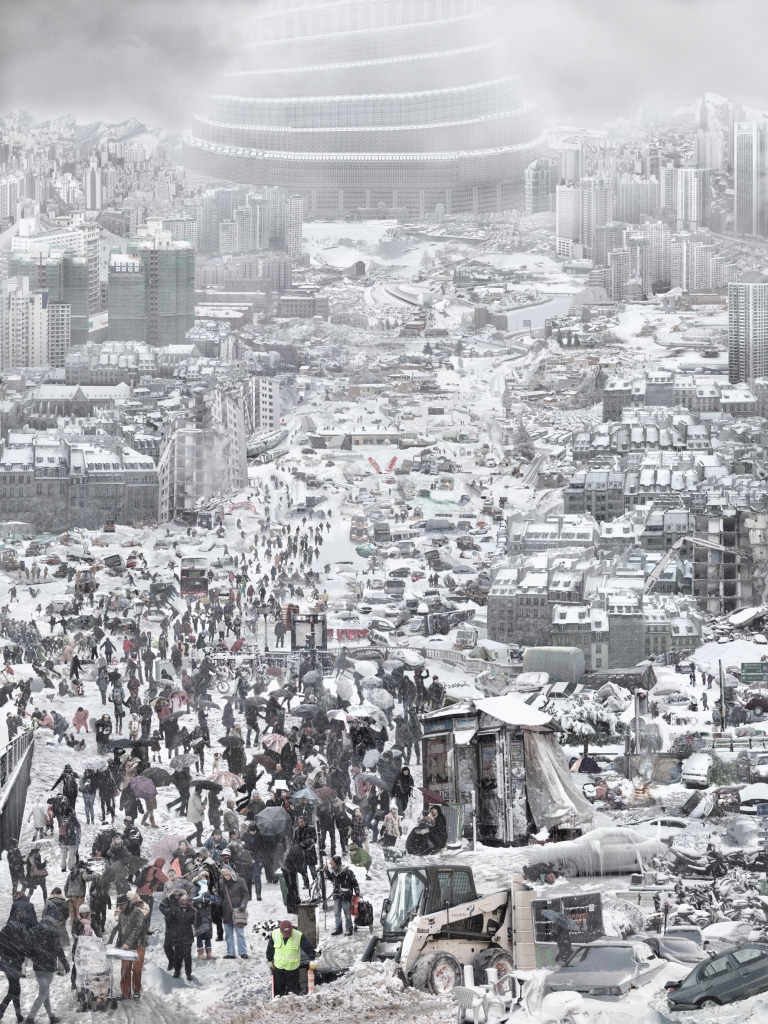
DU ZHENJUN, BABEL TOWER,_the_snow_雪__2010_Photography, size 120 x160 cm, 180 x240 cm.
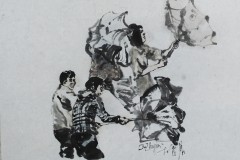
DU ZHENJUN, Figure of Wind, 40x40cm, Drawing on rice paper (mixed media, with Chinese ink)
« BABEL AND THE BEAST »
DU Zhenjun transposes paintings dealing with the myth of Babel, be they from Cornelius Anthoniscz, Gustave Doré or Brueghel. He uses thousands of images extracted from the World Wide Web, and raises the question of the future of humanity, prey to conflicts, natural disasters, violence and intolerance.
God destroys Babel not to oppose progress but the pride of man and his claim to reach heaven.
Babel represents the laudable longing for a single language shared by all but also, according to Eri de Luca in his book The Olive Core, the loss of diversity.
The Beast is man’s blind lust for power which, in the era of social networks, brings humanity into the new era of the Anthropocene, where his influence on the Earth’s ecosystem is both devastating and irreversible.
A painter, photographer and videographer, Du Zhenjun revisits this founding myth, as Dante travelled through the circles of hell. Like Jerome Bosch, Du Zhenjung adds humor and irony to his works in order to accentuate their dramatic character. As his great masters, he adds a few touches of color, often red, to give even more tension to his work. Similarly, the resumption of groups of similar characters in his compositions create a fragmented representation of the tragedy which threatens humanity.
Du Zhenjun’s work is the representation of a world in distress abandoned to its procession of financial, ecological, health and moral crises.
„ BABEL UND DAS BIEST“
DU Zhenjun wandelt Gemälde ab, die sich mit dem Mythos von Babel befassen; sie reichen von Cornelius Anthoniscz über Gustave Doré bis Brueghel.
Für seine Werke verwendet DU Zhenjun Tausende von Bildern aus dem World Wide Web und wirft dabei die Frage nach der Zukunft der Menschheit auf, die Konflikten, Naturkatastrophen, Gewalt und Intoleranz ausgeliefert ist.
Gott zerstört Babel nicht, um sich dem Fortschritt zu widersetzen, sondern um sich dem Stolz des Menschen und seinem Anspruch, den Himmel zu erreichen, entgegenzustellen.
Babel steht für die rühmliche Sehnsucht nach einer Sprache, die alle teilen, aber auch für den Verlust der Vielfalt, gemäß Eri de Luca in seinem Buch The Olive Core.
Das Biest ist die blinde Machtgier des Menschen, die ihn im Zeitalter der sozialen Netzwerke in die neue Ära des Anthropozäns bringt, in der sein Einfluss auf das Ökosystem der Erde verheerend und irreversibel ist.
Als Maler, Fotograf und Videograf nimmt DU Zhenjun diesen Gründungsmythos immer wieder von Neuem auf, so wie Dante die Kreise der Hölle durchreiste. Wie Jerome Bosch verleiht DU Zhenjun seinen Werken Humor und Ironie, um ihren dramatischen Charakter zu betonen. Wie die großen Meister fügt er ein paar Farbtupfer hinzu, oft rote, um seiner Arbeit noch mehr Spannung zu verleihen. Ebenso entsteht durch das Hinzufügen sich ähnelnder Personengruppen eine fragmentarische Darstellung jener Tragödie, die die Menschheit bedroht.
DU Zhenjuns Werk ist die Veranschaulichung einer Welt in Not, die von finanziellen, ökologischen, gesundheitlichen und moralischen Krisen heimgesucht wird.
Aber der Fall Babels ist auch, wie von Mallarmé beschrieben, der Beginn des Multikulturalismus und der Literatur, da Worte, die somit nicht mehr nur der Benennung von Gegenständen dienen, den Raum der Poesie und damit der Schönheit und der Harmonie öffnen.
« BABEL ET LA BETE »
Du Zhenjun transpose des peintures traitant du mythe de Babel, de Cornelius Anthoniscz à Gustave Doré en passant par Brueghel, à l’aide de milliers d’images extraites du web, pose la question du devenir de l’humanité, en proie aux conflits, aux catastrophes naturelles, aux violences et à l’intolérance.
Dieu détruit Babel non pour s’opposer au progrès mais à l’orgueil de l’homme et à sa prétention à atteindre le ciel.
Babel représente le désir louable d’une langue unique partagée par tous, mais aussi selon Eri de Luca dans Noyau d’olive, la perte de la diversité.
La Bête est la volonté de puissance aveugle de l’homme qui, à l’ère des réseaux sociaux, fait entrer l’humanité dans la nouvelle ère de l’Anthropocène où son influence sur le système terrestre est aussi dévastatrice qu’irréversible.
Peintre, photographe et vidéaste, Du Zhenjun revisite ce mythe fondateur, comme Dante parcourait les cercles de l’enfer. A l’instar de Jerome Bosch, Du Zhenjung ajoute humour et ironie dans ses œuvres pour en accentuer le caractère dramatique. Comme ses grands maîtres, il ajoute quelques touches de couleurs, du rouge souvent, pour donner encore plus de tension à son œuvre. De la même façon, la reprise de groupes de personnages semblables dans sa composition crée une mise en abîme de la tragédie qui menace l’humanité.
L’oeuvre de Du Zhenjun est la représentation d’un monde en perdition livré à son cortège de crises financières, écologiques, sanitaires et morales.
Mais la chute de Babel est aussi, comme l’affirme Mallarmé, le début du multiculturalisme et de la littérature puisque les mots, cessant de correspondre uniquement à des objets, ouvrent l’espace de la poésie, c’est à dire de la beauté et de l’harmonie.
But, as professed by Mallarmé, the fall of Babel is also the beginning of multiculturalism and literature inasmuch as words, ceasing to correspond solely to objects, open up the space of poetry, and thereby that of beauty and harmony
